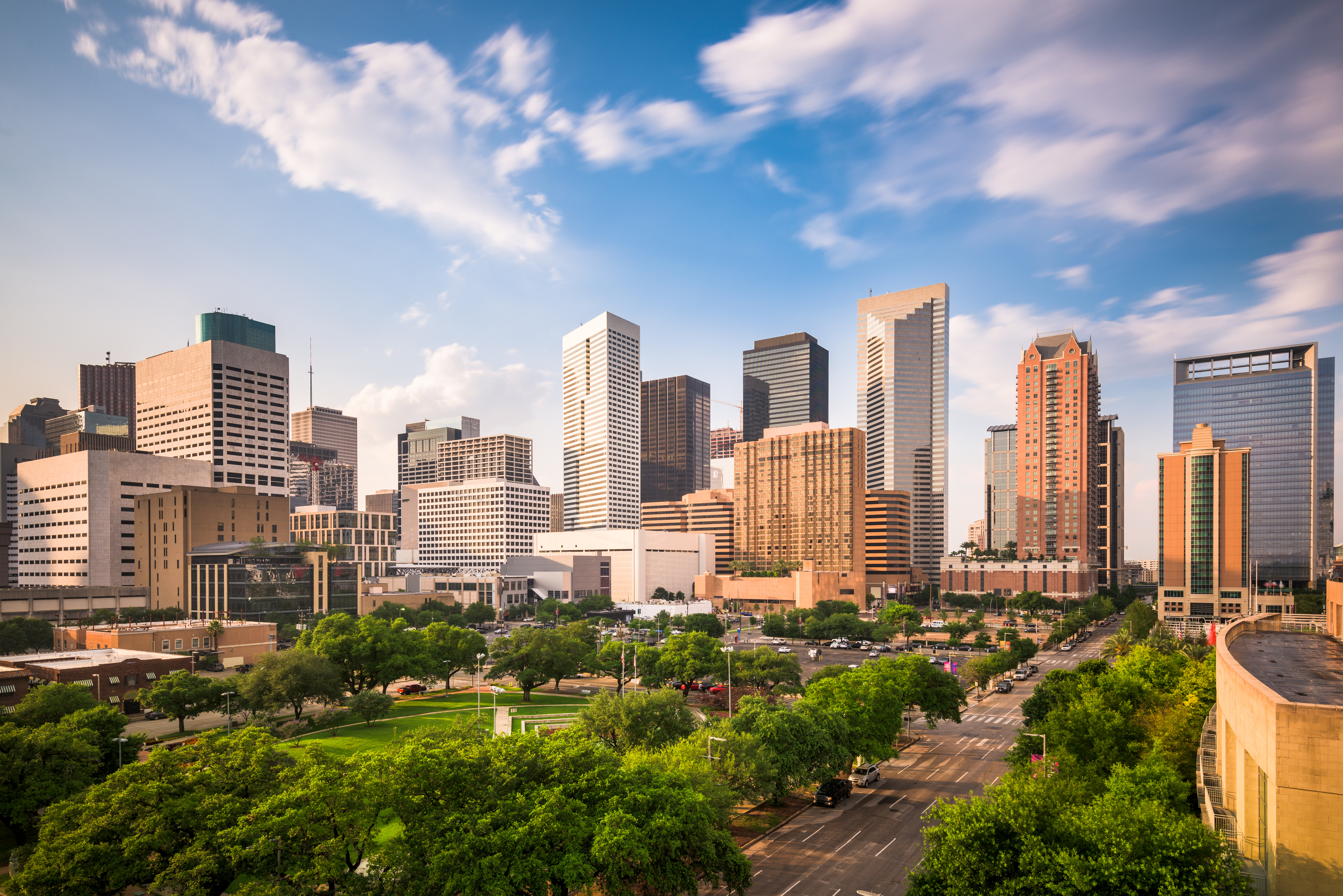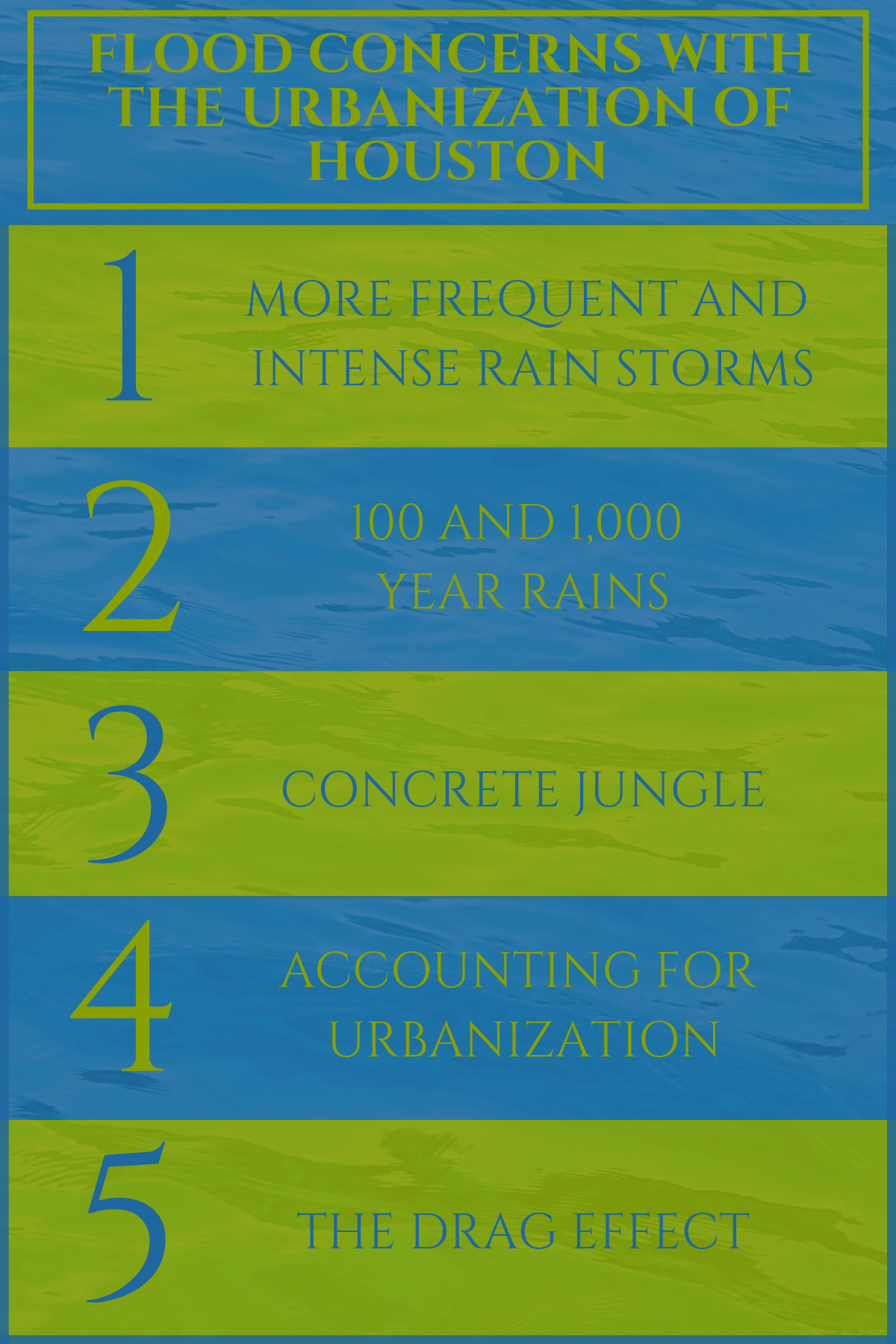22 Jan The Flood Concerns With The Urbanization Of Houston

855-368-5502
The Flood Concerns With The Urbanization Of Houston
By: Adam M. Matheny
More Frequent and Intense Rain Storms
Recent studies published by the NOAA (National Oceanic and Atmospheric Administration) and the National Hurricane Center show a significant increase in how often and how intense the rain storms in Houston have become. This information becomes even more critical when you add in the information contained in a study by the University of Iowa and Princeton University. This study shows a direct correlation between the urban sprawl and not only the amount of damage such as was seen after Hurricane Harvey, but also in the amount of rain that fell during the hurricane.
100 or 1,000-Year Rains
According to the National Hurricane Center, during Hurricane Harvey, the flooding in Houston was more than seen in a once in 1,000-year event, which is the highest level it uses in its calculations. In a more recent report issued by the NOAA, the 100-year flood level in Houston was increased from 13 inches to 18 inches within a 24-hour period.

Concrete Jungle
Over the course of four days, Hurricane Harvey managed to dump between 40 and 60 inches of rain over the Houston area. Which, according to the study released by the University of Iowa and Princeton University is partly the result of the widespread urbanization of the city. The spread of concrete is also to blame for widespread flooding as the water could not drain into the soil.
Researchers from both universities had this to say, ” Houston’s urban landscape directly contributed to the torrential rainfall and deadly flooding experienced during Hurricane Harvey in August 2017.” The report goes on to say that due to urbanization, the flooding caused in Houston by Hurricane Harvey was 21 times worse than it would have been in a non-urbanized setting.
Accounting For Urbanization
The study also shows that the effects of urbanization on heavy rains and flooding should also be taken into consideration when creating new global models. Hurricane Harvey was responsible for approximately $125 billion in damages and 68 deaths. The NFIP (National Flood Insurance Program) has received 78,865 claims related to Hurricane Harvey and paid out almost $9 billion in claims so far. This figure averages out to around $115,000 per claim. These figures cover all losses not just those in Houston.
Computer models were used to simulate the amount of rainfall in Houston caused by Hurricane Harvey and in areas that covered the same area but were utterly undeveloped. The simulations found that urban areas endured not only different rainfall patterns but also that urban areas received more rainfall than open fields.
The Drag Effect
In an article published for the University of Iowa’s Hydroscience and Engineering research center, Lynn Anderson Davy wrote that Houston’s skyscrapers also helped make the rainfall worse, the researchers found, by creating a “drag effect” that caused Harvey’s winds to shift upwards. When the warmer surface air met the cooler air in higher atmospheric levels, it created an “optimal situation for cloud formation and precipitation.” Also noted was the fact that the skyscrapers tend to slow storms down resulting in higher levels of rainfall in urban areas like Houston.

